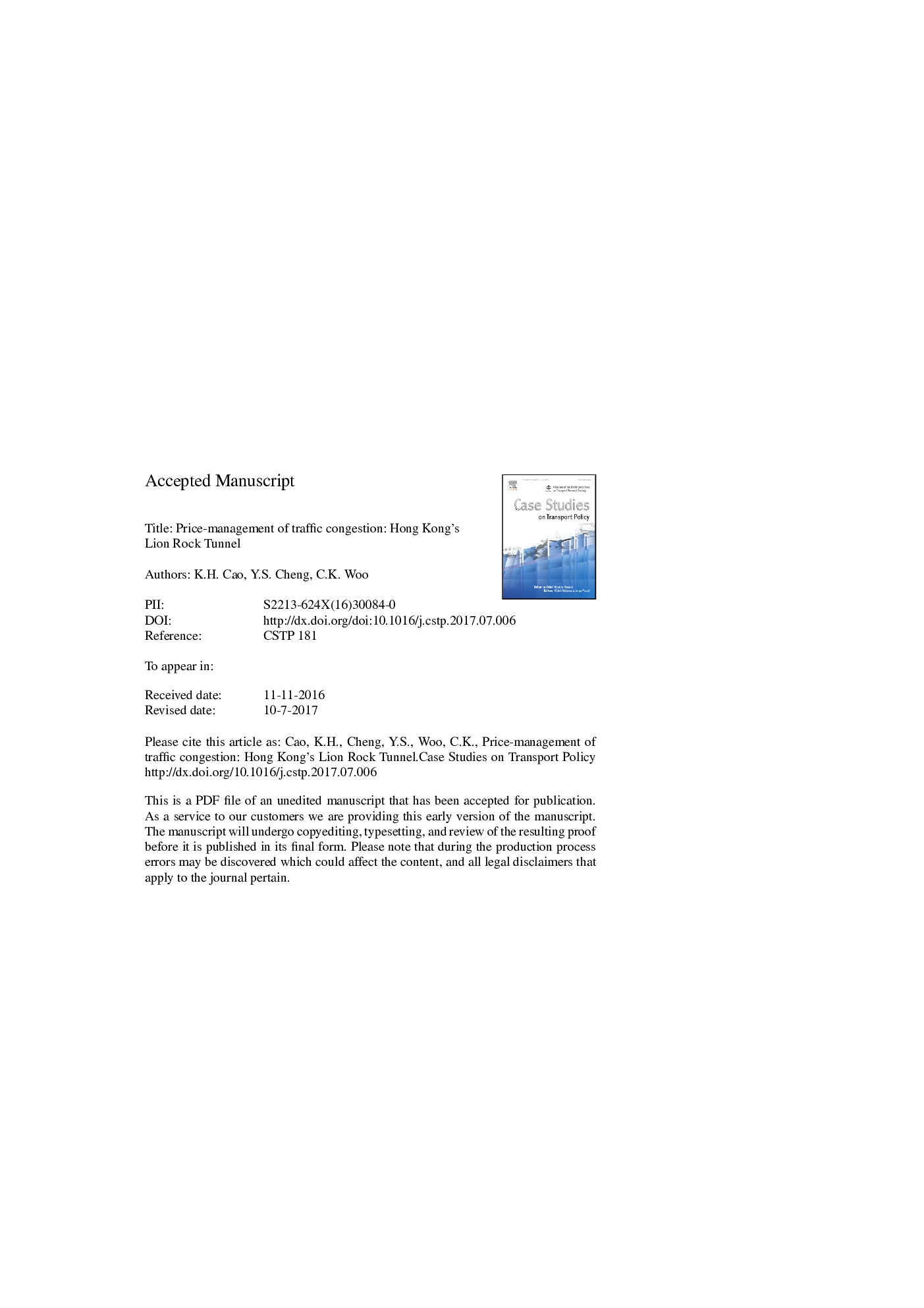| Article ID | Journal | Published Year | Pages | File Type |
|---|---|---|---|---|
| 6702401 | Case Studies on Transport Policy | 2017 | 37 Pages |
Abstract
Hong Kong drivers face rush-hour traffic congestion at the Lion Rock Tunnel (LRT) which interconnects the Northeast New Territories and the Kowloon Peninsula. The LRT's flat toll is HK$8 (âUS$1.03), much lower than the Tate's Cairn Tunnel's (TCT's) vehicle-differentiated tolls of HK$13 to HK$34 per vehicular trip. We develop two proposals to raise the LRT's toll and reduce the TCT's tolls. Using the monthly data available from the Hong Kong Transport Department for the 15-year period of 2000-2014, we estimate a Generalized Leontief demand system to document statistically significant (p-value < 0.05) tunnel usage responses to these toll proposals. As the two tunnels' elasticity estimates vary by traffic direction, a directional toll proposal may further ease the LRT's rush-hour congestion. Hence, Hong Kong can price-manage the LRT's congestion because a decrease in the LRT's total usage likely reduces the LRT's peak usage that occurs during the rush hours.
Related Topics
Physical Sciences and Engineering
Engineering
Civil and Structural Engineering
Authors
K.H. Cao, Y.S. Cheng, C.K. Woo,
